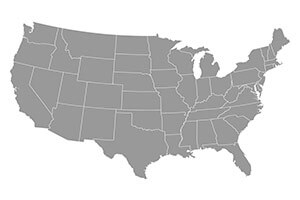
UNITED STATES
Reports from beekeepers indicate a mostly strong market for honey at both wholesale and retail levels. However, the pressure on large lots of honey offered to packers continues and offering prices are down some from last year. Reporters blame this on both cheaper foreign honey, as well as larger stocks of new crop U.S.-produced honey coming up for sale. Honey crops in the northern U.S. were better than earlier forecast in a number of states, but overall production on the West Coast and in the Southeast and Southwest was again disappointing. Honey production in the big honey-producing states of North and South Dakota and Montana has been estimated to be down somewhat from last season’s better than average per colony averages.
Going into winter, colonies were generally strong and had sufficient stores. The exception here is that a number of new colonies were not able to store sufficient amounts of honey for winter and these bees are being fed. In addition, migratory beekeepers moving their bees to southern states or California will need to begin intensive feeding programs in order to bring colony populations back to their peak in time for California almond pollination in February and March. Some beekeepers mentioned increased problems with varroa mites and small hive beetles this last summer and early fall.
NORTHEAST
Beekeepers in parts of New York and Pennsylvania ended the season with above normal honey flows. However, other parts of the Northeast did not do as well due to erratic spring and summer weather. Beekeepers were finishing their extracting and bottling in preparation for the holiday honey-buying season. Demand and prices remain excellent for small-lot wholesale sellers, as well as those beekeepers selling at the retail level. However, some of the larger honey buyers have reduced their offering prices in light of cheaper world market prices for honey.
Where good honey crops were obtained, beekeepers said their bees were going into winter in good shape with large bee populations. However, in other locations beekeepers were still feeding new colonies in an effort to provide sufficient winter stores. Some beekeepers told us they were late putting on their varroa controls since they produced good fall honey crops. Warm spells in October and early November kept bees flying, but nectar sources have dried up for the season. Beekeepers are hoping for better overwintering this coming winter which would cut their replacement bee costs, as well as provide stronger overwintered colonies for the 2016 spring honey flows. Beekeepers who had to replace a number of their colonies this season said that they missed important early spring flows since colonies were still building up rather than making honey.
MIDEAST
Demand for honey at the local level remains excellent in this area. Beekeepers in the Mideastern states had fair to good honey flows this years despite some erratic weather earlier in the season and a period of dry weather in August. Per colony averages of between 45 and 60 lbs. were common. Colonies were also able to make some fall honey that beekeepers mostly left with their hives for overwintering. Those beekeepers reporting from locations that made good crops have said that their bees are going into winter with strong populations and good honey stores. On the other hand, other beekeepers are having to feed if their areas produced poor honey crops or they started new colonies this spring that never built up in time to take advantage of the main honey flows. Some reporters have also mentioned more problems with varroa mites or small hive beetles this fall.
SOUTHEAST
Despite reports of lower packer offering prices for new crop honey that we reported last month, beekeepers this month seem to feel that prices for local honey are again firming up, at least temporarily. Demand has never really wavered for small lots sold at the wholesale level or for retail sales of local honey. Retail sales are expected to remain firm through the holiday season.
Heavy rains in October slowed remaining bee work. Some beekeepers were still feeding their colonies for overwintering, while others were moving colonies to holding yards in various states in preparation for almond pollination this coming February and March. This will require constant attention to management since colony buildup will have to be timed to coincide with the almond pollination season in California. Package bee and queen companies expect 2016 to be another busy season with some beekeepers already inquiring about prices and availability.
SOUTHWEST
Erratic weather, often accompanied by heavy rains, have plagued a number of locations this season, especially in eastern Texas and Louisiana. Even as this was written, heavy rains continued to be reported in portions of these two states. Colony conditions were better in Oklahoma and Arkansas. Farther west into New Mexico and Arizona, beekeepers had finished most of their bee work until early 2016 when queens will start brooding up again. Honey flow reports from irrigated alfalfa and cotton and from wildflowers and shrubs in the desert have been fair to good. Beekeepers continue to feed and medicate colonies. Meanwhile, northern migratory beekeepers are returning to their southern locations for the winter months. Colonies are generally strong going into winter, but some reporters said that they had problems with small hive beetles or varroa mites. Pollen patties are not being added to colonies until later in December because beekeepers want small hive beetle populations and activity to decline first.
With honey crops being a bit lighter than normal in the Southwest, beekeepers have not seen any letup in the demand for local honey. In fact, local sales are expected to continue to increase during the holiday season.
EAST CENTRAL
While parts of the South had too much rain this fall, parts of the Midwest went from too much rain to drought conditions during much …


